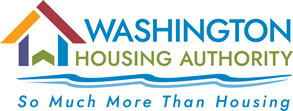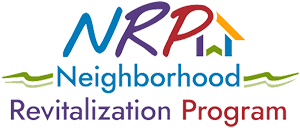NRP Brochure
Neighborhood Revitalization Program
to Your Journey to Homeownership Starts With Us!
Build Your Dream House In the Heart of Washington, On the Pamlico
Start Price: $190K
NRP - Neighborhood Revitalization Program
Making Home-Ownership You Reality!
*Down payment assistance available for eligible applicants!
Your Journey to Homeownership Starts With Us!
Our award-winning real estate broker has been an active steward of historic Washington for 12 years. She's passionate about helping you navigate the home-buying process and find the site and home design that's right for you.
Alexis Davis, Realtor:
Phone: (252) 702-9697
Email: alexisdavis@seacoastrealty.com
With 34 years experience in Housing Management, I can walk you through the homeownership application and preliminary approval processes. I connect first-time buyers with resources to prepare you for homeownership and help you clear stumbling blocks and feel at ease with this big step.
Julie Finn, Housing Manager:
Phone: (252) 944 6382
Email: julie@wha-no.org
With 40 years experience in affordable housing, including USDA, l assist you in finding affordable home loan packages. I'll guide first-time buyers through down payment assistance and clearly define your eligibility for various homeowner products. Let's turn your homeownership dreams into reality!
Beverly Casey, Financial Consultant:
Phone: (252) 402-0298
Email: bcasey@wha-nc.org
To apply now, please click here.
Your dream home should be built by us...
Teacher's Row & Beyond
City of Washington in Partnership With Washington Housing NonProfit, Inc.
What we do...
- Build New Affordable Homes
- Restore/Rebuild Existing properties
- Inspire Community Responsibility
- Provide Safe Neighborhoods for Families
- Help Families Remove Financial Eligibility Obstacles
- Restore Teacher's Row to a Vibrant Mixed-Income Community
- Help Existing Owners Secure Renovation Funding
Our homes are built by an award-winning local contractor with Washington's best interest at heart. Horton Contractors builds homes, not houses. He'll make yours feel just like it's meant for you. We pride ourselves in presenting a variety of options in homes, not cookie cutters.
Our support team of an experienced Realtor with historic interest in Washington's revitalization, a caring Housing Manager who walks you through the whole process, and a veteran Financial Consultant, work tirelessly to ensure your success.
Just take the first step and we'll be with you until the key to your dream home is turned over to your family.
Once you're happily settled in your residence, NRP provides at least one year of support in lawn care and home warranty. You'll love the way we show our love for renewing the neighborhood and making you a part of this beautiful project.
A Sense of Community
Restored for by and for you! "Phase I" is affordable homeownership within reach!
Phase I Summary
"Restoring Teacher's Row"
The heart of Washington is steeped with history. It's core was once a vibrant mixed-income community with a concentrated population of Black Professionals--lawyers, small business owners, the local dentist, first responders, and teachers. This blend with local factory, mill, domestic, and farm workers created a community blended for support vested in one another's success.
In the late 1940's through the late 60's Seventh Street, between Market and Pierce Streets, was known as "Teachers Row. Names like Beamon, Boyd, Cooper, Eason, Foxhall, Howard, Owens, Parham, and Teele were not only associated with residents on or around the corner from this street but tied to the classrooms of the Black public schools.
The home of the descendants of Louis Randolph, the first principal of public education for Blacks, was once a grand landmark on the corner of 7th and Respess Streets. Randolph also built and taught at an Enterprise Institute in the area where he trained teachers for his understaffed public school.
Narratives like this abound in the entire 18-block NRP area.
The heart of Washington is on the rise!
What's Your Home Design Preference?
Choose from professionally designed homes to fit your taste. Make it your own by customizing if you are financially eligible before construction is complete. Contact us soon to review all options!
Questions? Contact Us
- Alexis Davis, Realtor:
AlexisDavis@seacoastrealty.com
(252) 702-9697 - Julie Finn, Housing Manager:
Julie@wha-nc.org
(252) 944-6382 - Beverly Casey, Financial Consultant:
BCasey@wha-nc.org
(252) 402-0298


